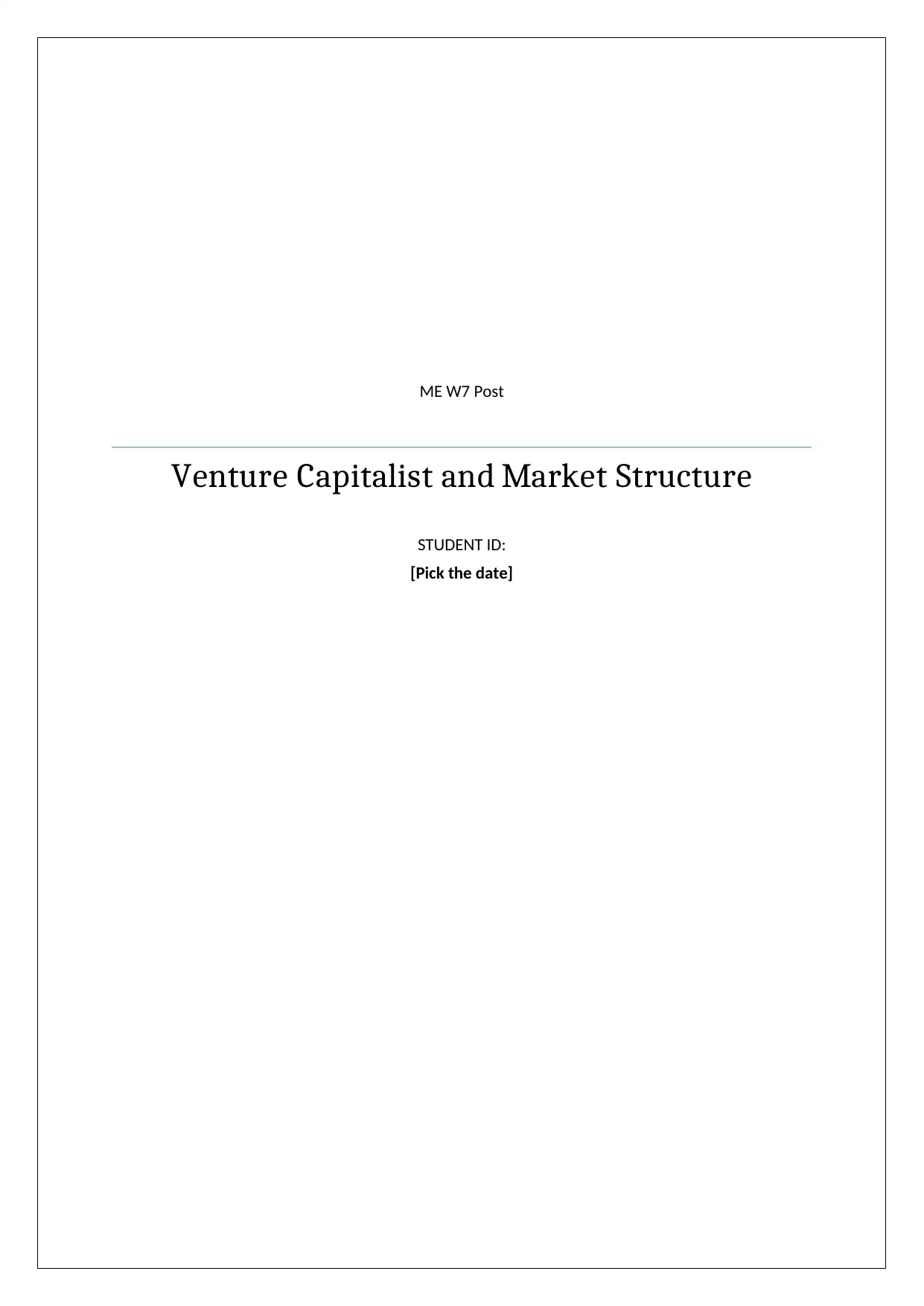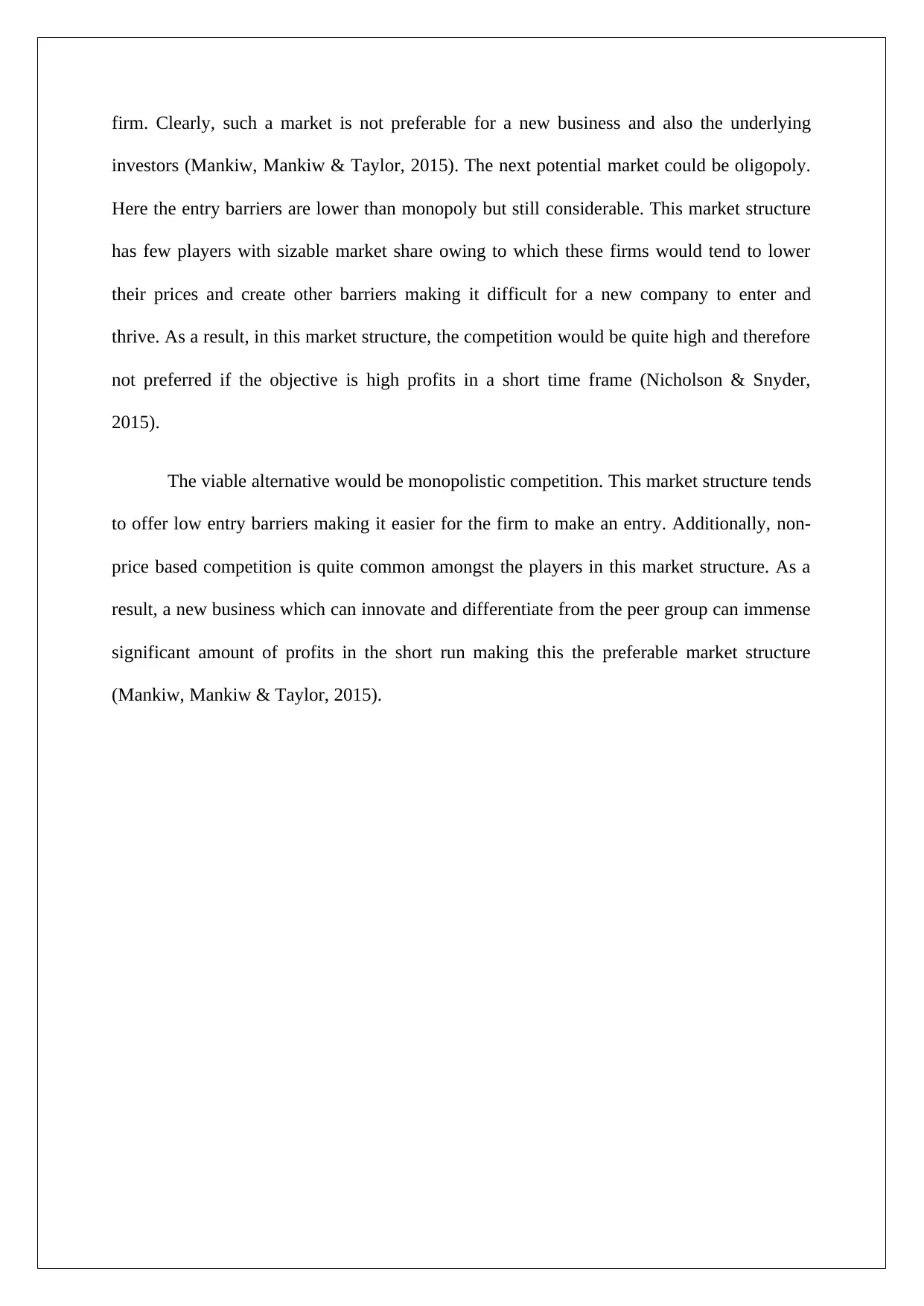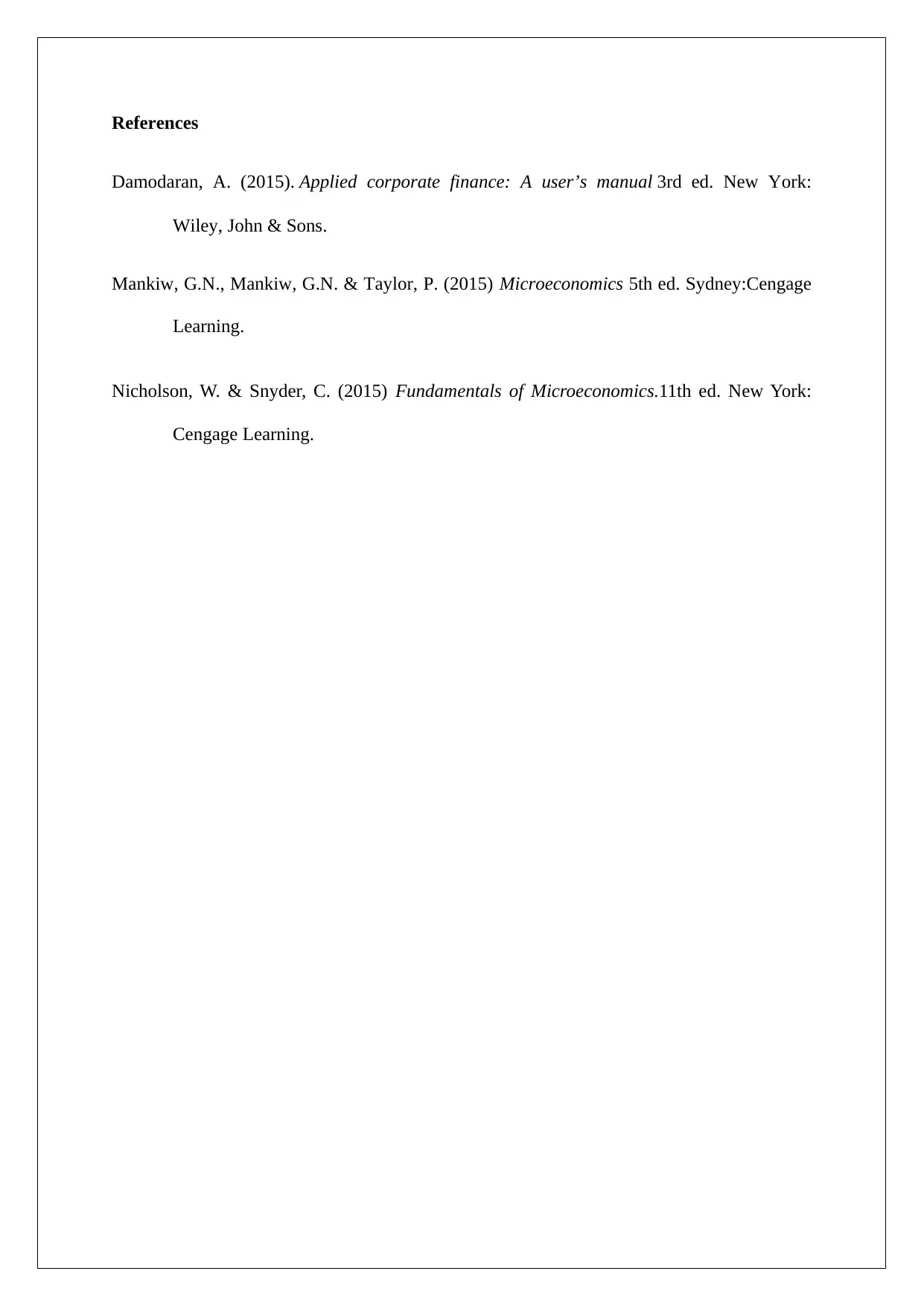Venture Capitalist: Market Structure and Investment Profitability
VerifiedAdded on 2023/06/03
|4
|670
|345
Essay
AI Summary
This essay explores the optimal market structure for venture capitalists seeking high returns on their investments in start-up businesses. It analyzes various market structures, including monopoly, oligopoly, and monopolistic competition, to determine which offers the most favorable conditions for profitability. The analysis concludes that monopolistic competition, with its low entry barriers and opportunities for differentiation, presents the best prospects for new businesses to achieve significant profits in the short run. The essay references established works in microeconomics and corporate finance to support its arguments, emphasizing the importance of market structure in influencing the risk and potential profitability of venture capital investments. Desklib provides a platform to access this and similar solved assignments.
1 out of 4










![[object Object]](/_next/static/media/star-bottom.7253800d.svg)